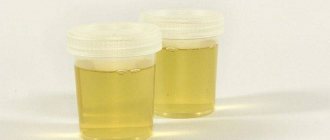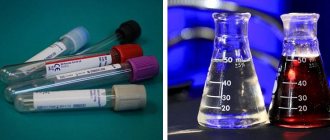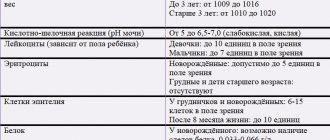Just because a person has lived his life does not mean that he can do everything and does everything right. Age is not an indicator of knowledge and wisdom, even if it is based on one’s own life experience. So, for example, many people have lived their lives and still don’t know how to properly obtain poop for stool analysis. And the way they do it is passed down from generation to generation. But due to modern technologies, the old-fashioned methods of collecting stool for analysis have sunk into oblivion. For many, taking a stool test is an extremely unpleasant experience, and the least favorite part is not even the queue at the test, but the process of collecting stool itself. That is why we will talk about how to properly take a stool test, how to easily and simply pick up poop, we will talk about how much feces you need and how and in what to store them.
ON A NOTE!!!
Before collecting stool for analysis, you must wash.
On air, Kakasic is a poop expert and now you will dive into the secrets of passing a stool test.
Rules for collecting stool for studying intestinal microflora (dysbacteriosis)
General requirements:
Use only disposable containers provided by the laboratory. The container is sterile, does not require pre-treatment and is completely ready for use. Feces should be collected in the morning - after natural bowel movements. Sample preparation in advance is not permitted. Freezing or storing the sample in the refrigerator is not permitted. All examined patients, 1-3 days before taking the sample, should be on a diet that excludes the intake of foods that enhance fermentation processes in the intestines and lactic acid products, as well as alcohol and bacterial preparations (containing bifidobacteria, lactobacilli, E. coli). Conducting research and collecting material before starting treatment with antibiotics, antiseptics, antifungal drugs or no earlier than 2-3 weeks after the end of the course of treatment.
What you should definitely do:
Thorough toileting of the external genitalia and anal area. Pre-urinate. It is not recommended to collect feces from the toilet. Defecate in a dry, clean container - a vessel or a “night vase”. First you need to rinse well with soap and a sponge, rinse repeatedly with tap water, and then rinse with boiling water and cool. It is not permissible to treat the vessel with synthetic detergents. Transfer the stool sample with a special spoon mounted into the lid of a sterile container in an amount of no more than 1/3 of the container’s volume. Close the lid carefully.
The following must not be allowed:
You cannot conduct a stool examination earlier than 2 days after an enema, an X-ray examination of the stomach and intestines, or a colonoscopy. All examined patients, 1-3 days before taking the sample, should be on a diet that excludes the intake of foods that enhance fermentation processes in the intestines and lactic acid products, as well as alcohol and bacterial preparations (containing bifidobacteria, lactobacilli, E. coli). On the eve of the study, you should not take medications, including: laxatives; Activated carbon; preparations of iron, copper, bismuth; use fat-based rectal suppositories. Do not allow urine or water into the sample. Conduct stool examinations in women during menstruation.
Failure to comply with the rules for collecting, timing and storage of samples obtained for research leads to a negative result.
How did you collect feces the old fashioned way?
Let's first talk about how they took poop for analysis before, when every apartment had toilets with a shovel, that is, the poop did not immediately plop into the water, but fell onto a place specially designed for it, a landing pad, so to speak. So, the diagram looked like this:
- Water was scooped out from the site and it was covered generously with toilet paper.
- Then they piled a pile on top of this paper.
- After that, the required amount of feces was picked out with a match and placed in a matchbox.
With the help of such a simple scheme, they extracted poop for analysis. But it has a number of errors. This is extremely inconvenient and there is a possibility of foreign bodies getting into the stool. Also, the toilet is not sterile, there are a lot of bacteria that try to spread to you and your shit.
Thanks to modern technology, the very toilets that allowed you to shit and then pick out the feces have sunk into oblivion. Today, even in old houses you don’t always see one like this. So how do you get shit for analysis today? Try to leave the thicker teal on the wall of the toilet and scrape it off into a box? Not at all. There is a smarter way. To do this, you need to shit in a chamber pot, for example, and then cut up the poop in it, choosing the piece you like.
ATTENTION!!!
Urine getting into feces is unacceptable!
Next, we will talk about modern approaches and tell you how to conveniently and quickly collect poop for analysis.
Analysis of stool for coprogram
No special preparation is required.
When diagnosing certain diseases, a doctor may prescribe a special diet for several days.
3-4 days before the study, stop taking laxatives, castor and vaseline oil and stop administering rectal suppositories. Also, a few days before the examination, it is necessary to avoid taking iron and bismuth supplements.
It is unacceptable to send feces for examination in matchboxes or cardboard boxes, as this changes the shape and consistency of the feces and distorts the results of the analysis. Disposable plastic containers must be used.
How to properly collect poop for analysis?
Now let's talk about the most important thing, how to collect feces for analysis. In fact, everything is not as simple as it seems and there are many buts that depend on the type of stool analysis. Yes, yes, there are different types of feces analysis and the specific collection sometimes depends on them. But overall the process is the same. Today, special plastic containers are used to collect feces, so collective farming is no longer necessary. It looks a little like a soap bubble jar, only shortened and instead of rings, a spatula, which we will use to pick up poop. If you are too lazy to go to the pharmacy, then look for small glass flasks at home, for example, from valerian or potassium permanganate.
ON A NOTE!!!
It is better to collect stool for analysis in the morning, immediately before delivery. It is not advisable to store shit for more than 8 hours. You should store stool in the refrigerator, but do not let it freeze.
Let's say you got a container for storing feces, now it's time to get the treasured poop. Have a spatula ready to collect stool in advance. Then sit on the toilet and shit, you don’t need to put any papers anywhere, you shit as usual, except for one thing. When the poop comes halfway out of your ass, you need to try to hold it back. If you can't slow down the shitting, squeeze your anus halfway so the poop breaks and you'll likely have enough poop sticking out of the anus to lift your butt off the toilet and scoop it up. If there aren’t enough scraps and you can’t get the shit out properly, then start pushing, pushing through the other half. Just be careful so that everything doesn’t come out at once. The second part should not come out as quickly as the first and you will definitely have the opportunity to collect the poop.
Scoop up the required amount of feces with a spatula, place it in the flask and immediately close the lid tightly. That's it, congratulations on your haul.
ON A NOTE!!!
Try not to touch the paddle for collecting feces and the inside of the flask with your hands, so as not to distort the analysis.
How to properly collect biomaterial (urine, blood, feces, sperm, etc.)
Urine collection
The urine of a healthy person is sterile, but when passing through the urethra it can become contaminated with microflora.
Therefore, it is very important to carry out correct urine collection, observing hygiene rules as carefully as possible. Before collecting urine, preliminary toileting of the external genitalia is performed. General urine analysis
For general analysis, the first morning urine sample is used. The collection is carried out in a special container, tightly closed with a lid and delivered to the laboratory. You cannot take urine from a vessel or potty. The collected urine is delivered to the laboratory immediately. Urine can be stored in the refrigerator (at 2-4°C), but not more than 2 hours.
24-hour urine collection
This procedure is necessary to determine some biochemical and hormonal parameters. The patient collects urine for 24 hours with normal drinking regimen (about 1.5 liters per day). In the morning at 6-8 o'clock he empties his bladder and pours out this portion of urine. Then, during the day, collect all the urine in a clean glass vessel with a wide neck and a lid, with a capacity of at least 2 liters. The last portion is taken exactly at the same time when the collection began the day before (the start and end times of the collection are noted). The container with urine must be stored in the refrigerator. At the end of urine collection, its volume is measured, the urine is thoroughly shaken and 50-100 ml is poured into a clean container or into a special container in which it will be delivered to the laboratory. Be sure to indicate the volume of daily urine!
Collection of urine for research according to Nechiporenko
Immediately after sleep, collect an average portion of morning urine while urinating freely. Urine collection is carried out using the “three-glass” sample method: first, the patient urinates into the toilet, continues into a container for collecting urine, and finishes again into the toilet. The second portion should be dominant in volume.
Collection of urine for microbiological examination (urine culture)
The urine is collected in a sterile container, which the patient receives in the laboratory. Collection of morning urine is carried out after thorough toileting of the external genitalia. The first 15 ml of urine is not used for analysis. The next 30-50 ml are collected in a sterile container with a lid. The material is delivered to the laboratory within 1.5-2 hours after collection. It is allowed to store urine in the refrigerator for no more than 3-4 hours.
Stool collection
Feces for general analysis
About 1 tablespoon of stool is placed in a special container and delivered to the laboratory within 5 hours. The stool must be obtained without the use of enemas or laxatives.
Examination of stool for helminth eggs
For detection of protozoa, intestinal pathogens, rotaviruses. The stool is collected in a sterile container and delivered within 3 hours of collection.
Microbiological analysis of intestinal microflora
With determination of antibiotic and phage sensitivity (for dysbacteriosis). For this test, you need to collect about 5 g (1 teaspoon) of stool from the middle of the stool and place it in a sterile container. The stool should be obtained without the use of enemas or laxatives. Deliver to the laboratory no later than 3 hours after collection.
Examination of feces for occult blood
One day before taking this test, it is necessary to exclude meat, liver, blood sausage and all foods containing iron from the diet (apples, bell peppers, spinach, white beans, green onions, cucumbers, etc.) Stool must be obtained without using enemas and laxatives. The collection of stool, about 1 teaspoon in volume, is carried out in a special container. The material is delivered to the laboratory within 5 hours.
Test for enterobiasis (to identify taeniids and pinworms)
For this study, biomaterial is taken from the perianal folds (around the anus) by the patient himself. The procedure is carried out in the morning immediately after getting out of bed, before performing hygiene procedures, urination and defecation. Using a cotton swab in a circular motion, the material is taken from the perianal area (where the above helminths lay eggs), after which the stick is placed in a special container (remove the unused end of the cotton swab). The material is delivered to the laboratory within 3 hours after collection.
Breast milk research
Before collecting the material, wash the breasts with warm water and soap, dry with a clean towel, carefully treat the nipples and the area of the mammary glands with a cotton swab moistened with 70% ethyl alcohol (each gland is treated with a separate swab). The first 10-15 ml of expressed milk is not used for analysis. The next 3-4 ml of milk are collected from each breast into separate containers (sign right and left). The material is delivered to the laboratory within 2 hours after collection.
Sputum culture
The sputum is collected in a sterile container. Before coughing, the patient should brush his teeth and rinse his mouth with boiled water. To improve coughing, the patient should first be prescribed expectorants and warm drinks. The material is delivered to the laboratory within an hour.
Examination of a throat smear to determine sensitivity to antibiotics
For diphtheria, Mycobacterium tuberculosis, hemolytic streptococcus. A swab from the throat is taken strictly on an empty stomach; before the test you should not brush your teeth, rinse your mouth with water, or drink.
Sperm culture
For a more reliable result, sexual abstinence for more than 2 days is necessary. The sperm is collected in a sterile container, which must be obtained from a laboratory. In the morning after sleep, you need to urinate and thoroughly clean the external opening of the urethra with warm water and soap. Collect material by masturbation. Deliver the sperm to the laboratory within 3 hours after collection.
Collecting prostate secretions for culture
Prostate secretions are obtained through vigorous massage of the prostate gland by a physician. The material is collected in a sterile container after toileting the external opening of the urethra with warm water and soap.
Spermogram
Sperm is donated after at least 48 hours of sexual abstinence; the material is collected by masturbation in a special sterile disposable container. Before this, you should not take alcohol or medications. When repeating a study, it is advisable to set equal periods of abstinence to reduce fluctuations in the results obtained. Sperm collection is carried out by appointment.









